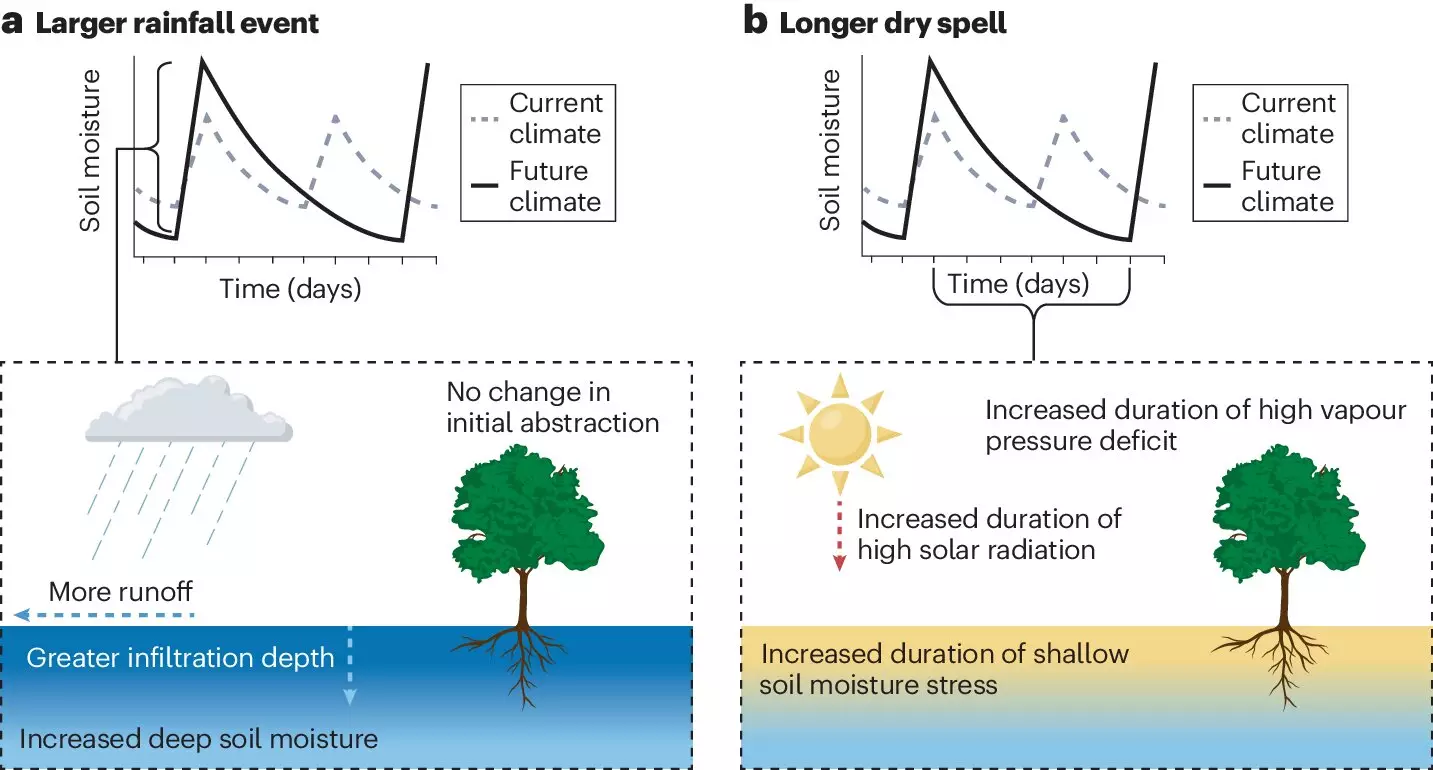Climate change is having a profound impact on the world’s weather patterns, with April showers intensifying into deluges and altering the way plants grow and thrive. A recent study led by the University of Maryland highlights the shift towards more intense but less frequent rainfall events across the globe. This change in precipitation is causing a significant impact on plant ecosystems worldwide, with plants in different regions responding differently to the changing climate.
Varying Responses of Plants
According to the research conducted by Andrew Feldman and his colleagues, plants in dry ecosystems, such as the American West, tend to benefit from longer dry periods interspersed with stronger downpours. On the other hand, plants in wetter regions face challenges due to the increased variability in rainfall patterns. The study found that different plants respond differently to water, with dry ecosystem plants being more sensitive to large rainfall events compared to wet ecosystem plants.
As a result of climate change, there is the potential for significant shifts in the composition of plant ecosystems. The researchers noted that plants can adjust their photosynthesis and growth by as much as 10% to 30% in response to changes in rainfall patterns. In regions like the Midwestern United States, plant function shifted by 25% over a year due to altered rainfall patterns. These changes can have far-reaching consequences for the overall health and productivity of ecosystems.
The study found that plants across the globe responded differently to changing rainfall patterns, with some showing improved growth while others suffered. In 42% of cases, plants fared worse in the face of less frequent, more intense rainfalls. This highlights the complex relationship between plants and climate change, with implications for crop yields and the uptake of carbon from the atmosphere.
Moving forward, Andrew Feldman and his team are planning a global analysis of how plants respond to the changing rainfall patterns using satellite measurements. Their research will focus on understanding the optimal frequency of rainfall for plant growth and how different plant species adapt to changing climatic conditions. By studying the underlying soil and plant processes that drive these responses, the researchers hope to accurately predict the effects of extreme rainfall events on plant ecosystems.
Climate change is reshaping the way plants grow and thrive worldwide. As rainfall patterns become more intense and less frequent, plants must adapt to survive in their changing environments. By studying these responses and understanding the underlying processes at play, researchers can gain valuable insights into how plants will continue to evolve in the face of a changing climate.


Leave a Reply